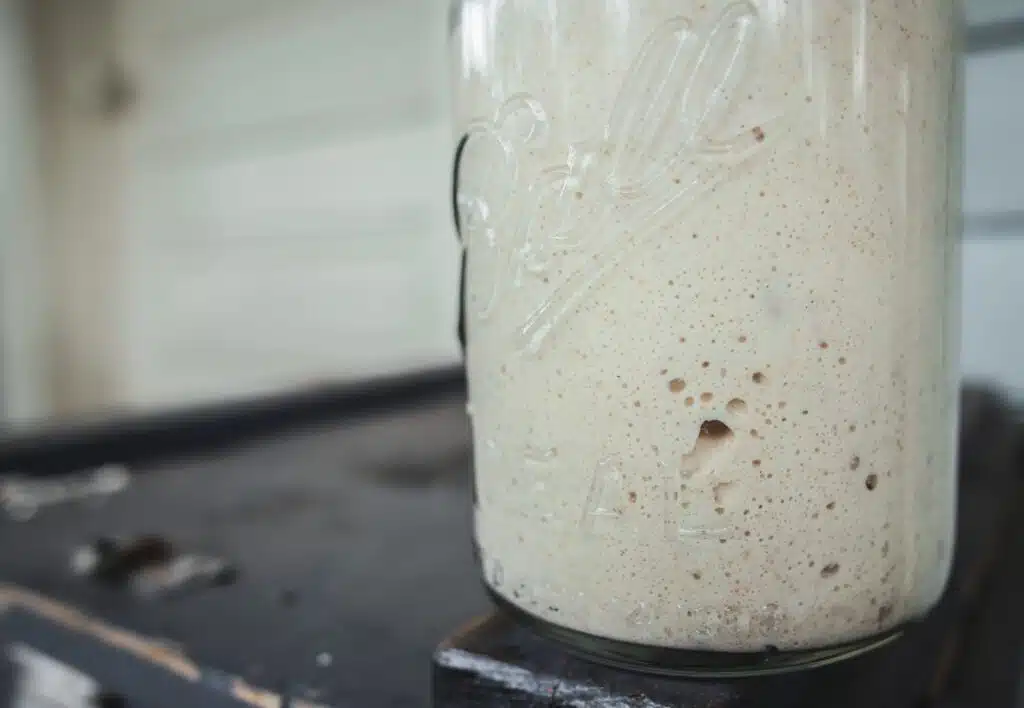
My sourdough starter has been through many phases. It has smelled bad, gotten grey, and one time I accidentally baked it in the oven! There have been many successes and failures but after a couple of years consistently keeping a healthy starter, I am ready to share all my best tips and tricks. Whether you want to learn to revive a struggling starter or learn about the best flour for sourdough starter, this blog should get you back on track!
My first starter was from a local bakery in 2020. I bought a pastry and asked nicely if they would give me a scoop of their starter. This is a great way to get started with a sourdough starter if you don’t want to worry about cultivating your own. Sourdough starter from a local bakery will usually be very strong and active. Now that you have your starter, its time to learn the ropes:
New to keeping a sourdough starter? Start here!
You do not need to measure every feeding
Some “experts” will tell you that you need to break out the scale and measure flour and water every time you feed your starter, but this is not true. You can feed your starter as much or as little as you want. The best way to learn how much to feed your starter is to get to know how it reacts to different amounts of flour and water, in addition to temperature changes. Add as much flour and water as you like until you reach a thick cake batter consistency. If I want to bake with my starter soon, I will give it a really big feed (high ratio of water and flour to starter) so it is really active when I am ready to bake.
Remember: temperature matters
Sourdough starter is simple fermentation at the end of the day so it is very important to remember that temperature matters a great deal.
Higher temperature = faster, more active fermentation
Lower temperature = slower, more sluggish fermentation
This means that if you place your starter in a sunny window or a hot summer kitchen, it will rise faster. If you leave your starter in a cold winter kitchen or near a drafty window, your starter will be much slower to rise. If your sourdough starter is struggling, ask yourself: what temperature is my starter sitting at? What season is it outside? Is the AC blowing cold air on it at night? In order to keep my starter warm, I also like to feed it with warm water and keep it in the warmest part of my kitchen, especially in the winter.
Best Flour for Sourdough Starter
Organic unbleached bread flour is the best flour for sourdough starter
You can also use unbleached all-purpose flour but make sure it is organic because flour is one of the most heavily sprayed crops right now!
Organic Rye Flour
A few years ago a seasoned baker tipped me off to feeding my starter with rye and it has made such a difference! I don’t solely use rye, but I do like to add some to my starter to help activate it and add lots of flavor.
Why does my starter smell so bad?
This is probably happening because your starter is hungry. Discard most of it, give it a generous feeding and monitor for bubbles and activity. It is also important to become familiar with the smell of your starter so you can recognize when something is off.
What is this brown liquid?
Hooch is a brownish liquid that will develop on the top of your starter. This usually happens when the starter hasn’t been fed recently and is hungry.
What do you do with Hooch?
Don’t throw your starter away! Simply drain the hooch from the jar and discard most of the starter. Give your starter a large feeding that day and the next day and monitor it.
When should I feed my starter and when should I put it in the fridge?
It depends on how often you want to bake. If you plan to bake with your starter every day, keep it out at room temperature. If you are not using your starter every day, you can keep it in the fridge until a day or two before baking. Pull it out a few days before baking and feed it twice a day until you see lots of activity and bubbles.
When do I need to feed less and when do I need to feed more?
Feed more:
When your starter hasn’t been as active and bubbly as you would like, feed more and often to revive it. You will also need to feed more when you discover hooch or any grey at the top of your starter.
Feed less:
When your starter has been active and you don’t want to discard any before your next bake.
When should I throw out my starter?
Most starters can be revived. I have only had to throw mine out once and that was because I accidentally baked it in the oven….not my finest hour, I will say.
Usually, my solution to an inactive starter is to discard most of it and give it a large feeding a few times until you see activity.
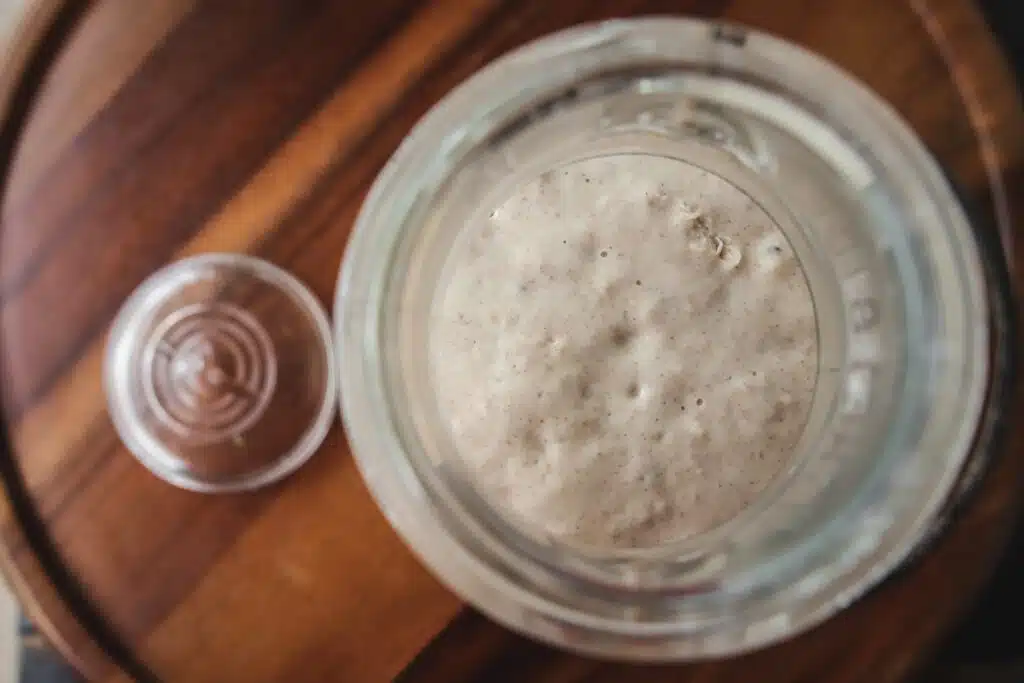
What kind of container should my starter live in?
I like to keep mine in a large mason jar with a trigger closure, but you can keep it in any container with a lid and room to expand. I also love to sew a linen cover to make it look cute and homespun on my windowsill. You can find more information on this topic in my sourdough baking supplies blog!
How do I know when my starter is ready to use?
The best way to tell when your starter is ready to use is by how active and bubbly it is. If your starter has doubled in size since feeding it, it will be ready. Another way to double check the activity of your starter is with the float test. To perform the float test, add a spoonful of active starter to a bowl of water and see if it floats. If it is ready for baking it will have lots of air in it and will easily float. If it is not active, it will quickly sink.
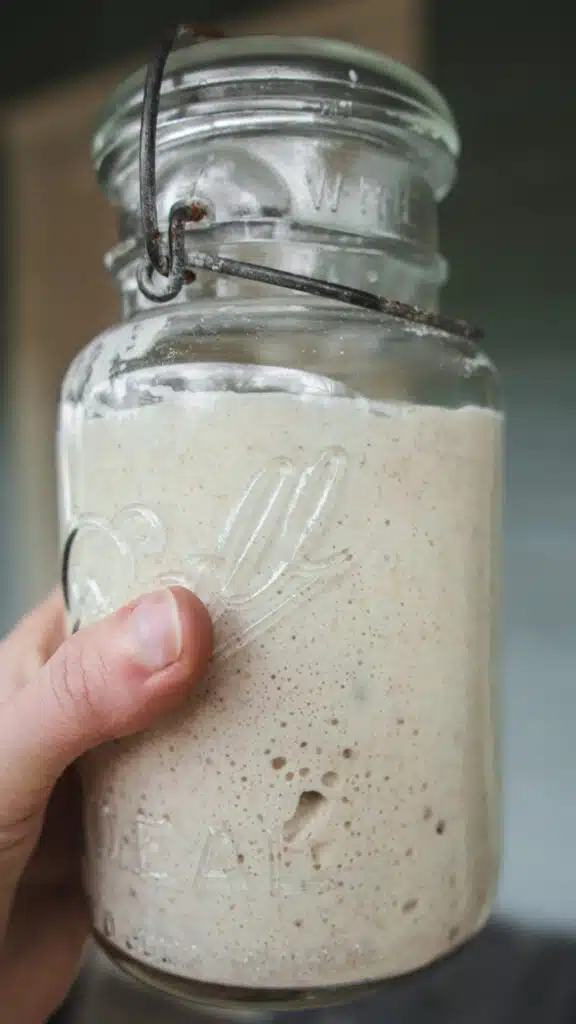
Sample Sourdough Starter Feeding Schedule
I like to keep my starter in the fridge most of the time and only take it out before baking. This means I don’t have to feed it every day or waste any by discarding it.
DAY 1: The morning before you start mixing the dough:
- Take starter out of the fridge and allow it to come to room temperature.
- Give it a really generous feeding that afternoon
- Allow the starter to become bubbly and active
- If your starter does not rise and activate 8 hours after feeding, feed it again the next morning.
DAY 2: The morning of mixing your dough
- If your starter is not ready to bake with yet, give it another generous feeding the morning before you start mixing your dough
- Mix your dough in the afternoon with your active starter and proceed with fermenting/baking process
DAY 3: After baking
- If you are not going to be baking for a while then you can put your starter back in the fridge until you are ready to feed it again.
I hope this was a helpful guide to all your starter questions. Now that you know the best flour for sourdough starter, how to know when it is ready to bake, and so much more you are ready to take on all things sourdough. I’m sure I missed a few things, so feel free to add more questions in the comments!
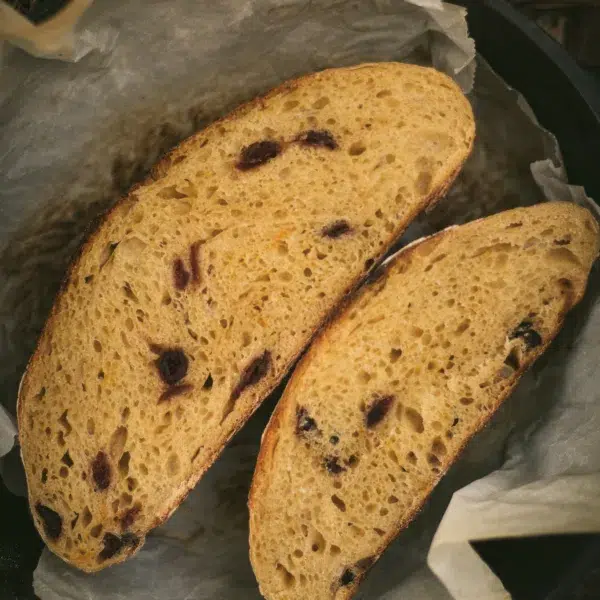
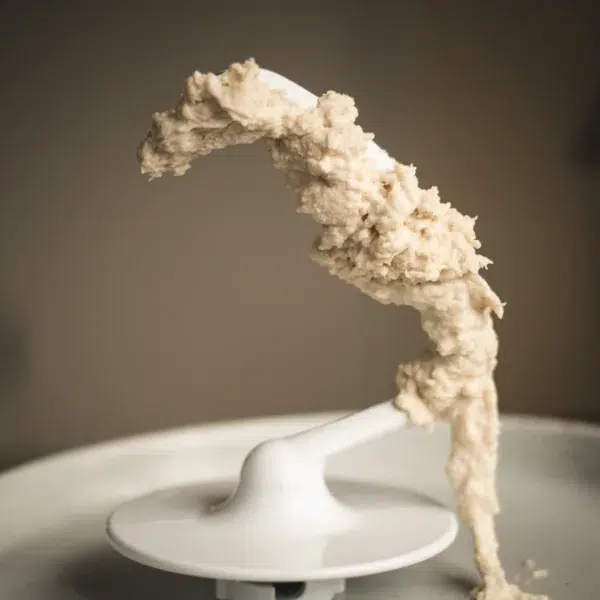

Thank you ! Oh want to add I had a finest hour 2 months ago. Thought I preheated my lower oven for biscuits then I detected a sweet sour scent. I baked my 10 year old starter. I used to keep in my top oven for warmth.
There is nothing worse than baking your starter! My starter has been through a lot but the only time I really had to throw it away was the time I accidentally baked it. Now, I never put my starter in the oven for any reason.